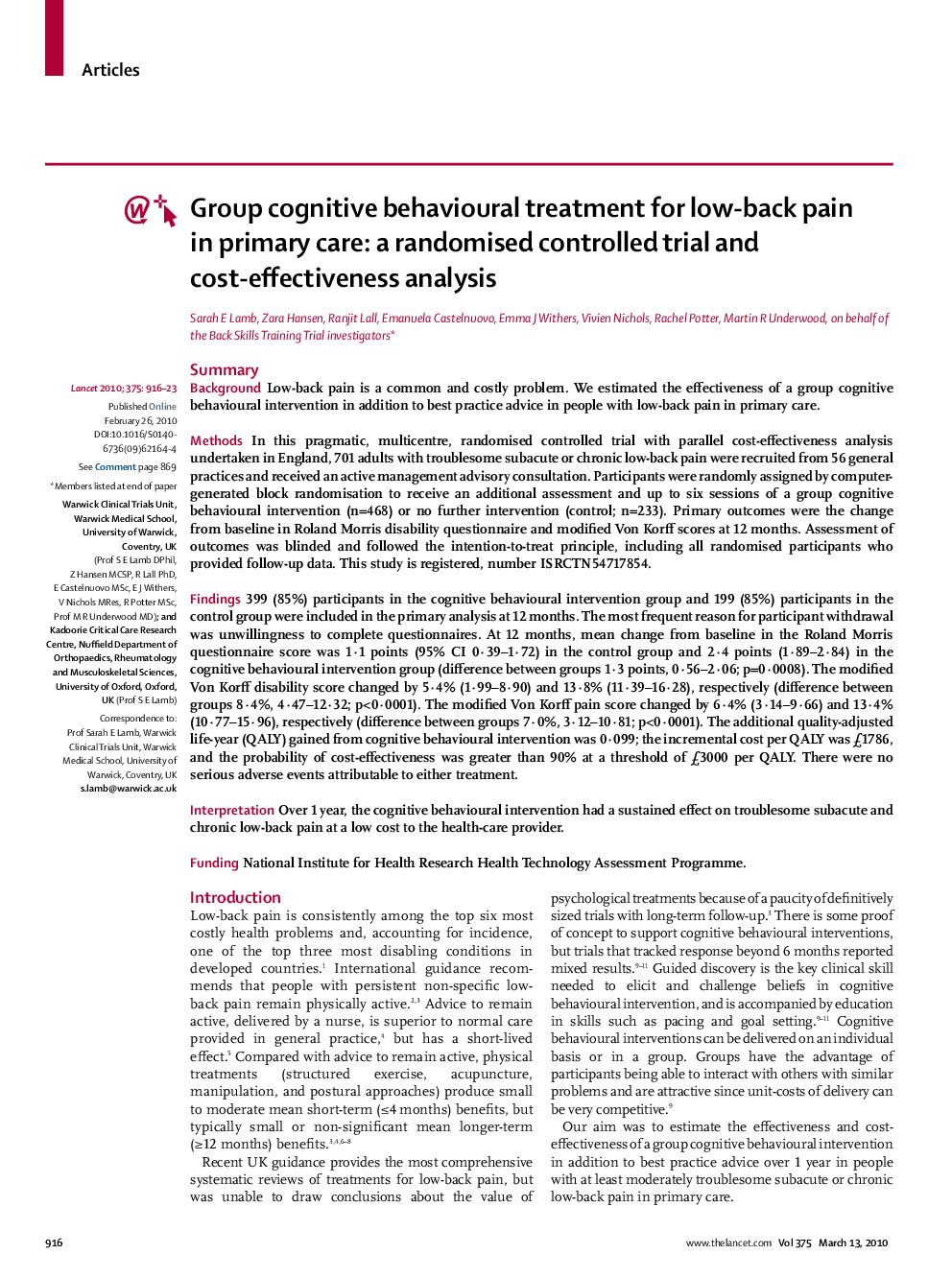| کد مقاله | کد نشریه | سال انتشار | مقاله انگلیسی | نسخه تمام متن |
|---|---|---|---|---|
| 3494200 | 1234280 | 2010 | 8 صفحه PDF | دانلود رایگان |

SummaryBackgroundLow-back pain is a common and costly problem. We estimated the effectiveness of a group cognitive behavioural intervention in addition to best practice advice in people with low-back pain in primary care.MethodsIn this pragmatic, multicentre, randomised controlled trial with parallel cost-effectiveness analysis undertaken in England, 701 adults with troublesome subacute or chronic low-back pain were recruited from 56 general practices and received an active management advisory consultation. Participants were randomly assigned by computer-generated block randomisation to receive an additional assessment and up to six sessions of a group cognitive behavioural intervention (n=468) or no further intervention (control; n=233). Primary outcomes were the change from baseline in Roland Morris disability questionnaire and modified Von Korff scores at 12 months. Assessment of outcomes was blinded and followed the intention-to-treat principle, including all randomised participants who provided follow-up data. This study is registered, number ISRCTN54717854.Findings399 (85%) participants in the cognitive behavioural intervention group and 199 (85%) participants in the control group were included in the primary analysis at 12 months. The most frequent reason for participant withdrawal was unwillingness to complete questionnaires. At 12 months, mean change from baseline in the Roland Morris questionnaire score was 1·1 points (95% CI 0·39–1·72) in the control group and 2·4 points (1·89–2·84) in the cognitive behavioural intervention group (difference between groups 1·3 points, 0·56–2·06; p=0·0008). The modified Von Korff disability score changed by 5·4% (1·99–8·90) and 13·8% (11·39–16·28), respectively (difference between groups 8·4%, 4·47–12·32; p<0·0001). The modified Von Korff pain score changed by 6·4% (3·14–9·66) and 13·4% (10·77–15·96), respectively (difference between groups 7·0%, 3·12–10·81; p<0·0001). The additional quality-adjusted life-year (QALY) gained from cognitive behavioural intervention was 0·099; the incremental cost per QALY was £1786, and the probability of cost-effectiveness was greater than 90% at a threshold of £3000 per QALY. There were no serious adverse events attributable to either treatment.InterpretationOver 1 year, the cognitive behavioural intervention had a sustained effect on troublesome subacute and chronic low-back pain at a low cost to the health-care provider.FundingNational Institute for Health Research Health Technology Assessment Programme.
Journal: - Volume 375, Issue 9718, 13–19 March 2010, Pages 916–923